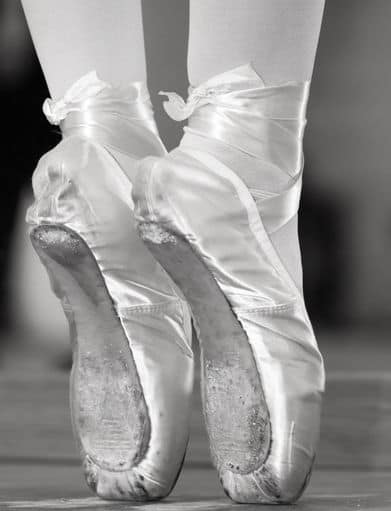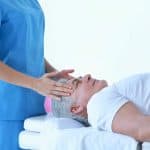

Whether it is television’s “Dancing with the Stars,” professionally produced stage shows such as “Riverdance” or “Cirque de Soleil,” or live performances of classical ballet, we have come to see professional dancers as the athletes that they really are.
Often starting when they are very young in local competitions, the stars we see on stage or the dance floor already have years of lessons, training and rehearsals behind them. With all that work the body gets a daily workout which cannot only strengthen muscles but strain them as well, leaving the dancer with aches, pains and injuries that can adversely affect the next performance.
Dancers as Clients
Having seen how helpful massage can be, many dance companies now employ a full-time massage therapist. In some cases one or more of the dancers has attended massage school and is certified in massage; in other cases it is a physical therapist or physiotherapist who is also trained in massage. Some dance troupes may hire a massage therapist as needed, or have a massage therapist on call as an independent contractor.
Some massage therapists, while not associated solely with a particular company, may opt to specialize or focus their practice on dancers. This could include not only the highly trained professionals, but also amateur competitors – those who just love to dance on weekends or even individuals just starting out with dance lessons.
Common Dance Injuries
Dance injuries are similar to what would be considered sport injuries. Just as athletes, they run, jump and endure long periods of high energy activity. For those few minutes of actually performing on stage, they may have rehearsed or exercised for six to eight hours a day, or even more, several days a week. In addition to the physical movement part of the profession, in some cases, like Broadway shows, the dancers may have to wear heavy costumes or other gear both in dress rehearsals and actual performances. This means extra stress on joints, ligaments and muscles not only in the arms and legs – yet also in the neck and back muscles, too.
Perhaps the most common injuries are to the legs and back. With dance, whether bouncing up and down as in a Jive, Quickstep or Lindy-hop, or sliding across the floor in a Waltz, the legs and feet are constantly in motion, constantly enduring stress. The back often gets a workout with Latin dances such as Salsa, Rumba and Paso Doblè with all the hip shakes, twists and turns of both the upper and lower torso. Neck injuries, similar to whiplash, can occur with the fast snapping of the head as well as some of the lifts and jumps where one partner may jump over or slide under the other.
Less common are arm injuries or injuries to the face and head, simply because they do not receive the impact other body parts get exposed to. Arm injuries may occur in partner dancing when one partner flips or twists the other and the hold somehow gets stuck, while the partner moves on still holding tight. One partner lifting the other can also cause strains and stress on muscles in the arms, back and legs.
Helpful Massage Techniques
To help in the prevention of injury, dancers may do specific exercises and stretches, such as those offered in Pilates, a regimen designed to strengthen the body’s core muscles as well as maintain flexibility and develop good coordination. Yoga is also a good choice for being able to keep focused and limber. A good overall massage, used for relaxation and keeping the body in good health, would be Swedish massage. Dancing, as lovely as it looks, can be very stressful for professionals and amateur competitors. It must be cautioned, though, a relaxing massage should never be received the day of a performance as it can affect the dancer’s balance and coordination adversely. The very nature of a relaxing massage and its engagement of the parasympathetic nervous system is paradoxical to the needs of a dancer who has to be ready to move quickly and with precision.
Modalities such as The Feldenkrais Method help to reconnect the body to its natural movements, connecting the thoughts of the mind to the motion of the body. The Alexander Technique helps to re-educate and retrain the body away from harmful movement patterns and release unnecessary tension in the muscles.
What can be helpful on an almost daily basis are massage techniques learned from Sports Massage. Over the years the development of Sports Massage techniques have been proven to help keep muscles toned as well as speed up the healing process, so the athlete may return to playing as quickly as possible. Shorter massages, such as simply massaging the calf muscles may be helpful in limbering up before a dance practice session or removing toxin buildup after a performance.
Dancers and other performers should routinely be examined for hidden, yet painful, injuries that may indicate precautions for massage therapists such as shin splints, hairline fractures, broken ribs or severe muscle tears. Any neck injury should be thoroughly checked out by a physician before attempting any massage work. With most sprains, strains and painful injuries, it is usually better to wait a day or two – sometimes more – before massaging the area. When in doubt, get clearance from a doctor.
One of the requirements for a good and dedicated dancer is the need for intensive workouts, practicing routines and basic moves as well as maintaining a hectic schedule of performances. Days not dancing means the body can quickly lose tone, strength, flexibility and stamina. Massage therapy can be part of an overall program used to keep a dancer on her (or his) toes.
Recommended Study:
Advanced Anatomy and Physiology
Advanced Anatomy for Professionals
Orthopedic Assessment
Structural Integration and Wellness
Swedish Massage for Professionals
Sports Massage















